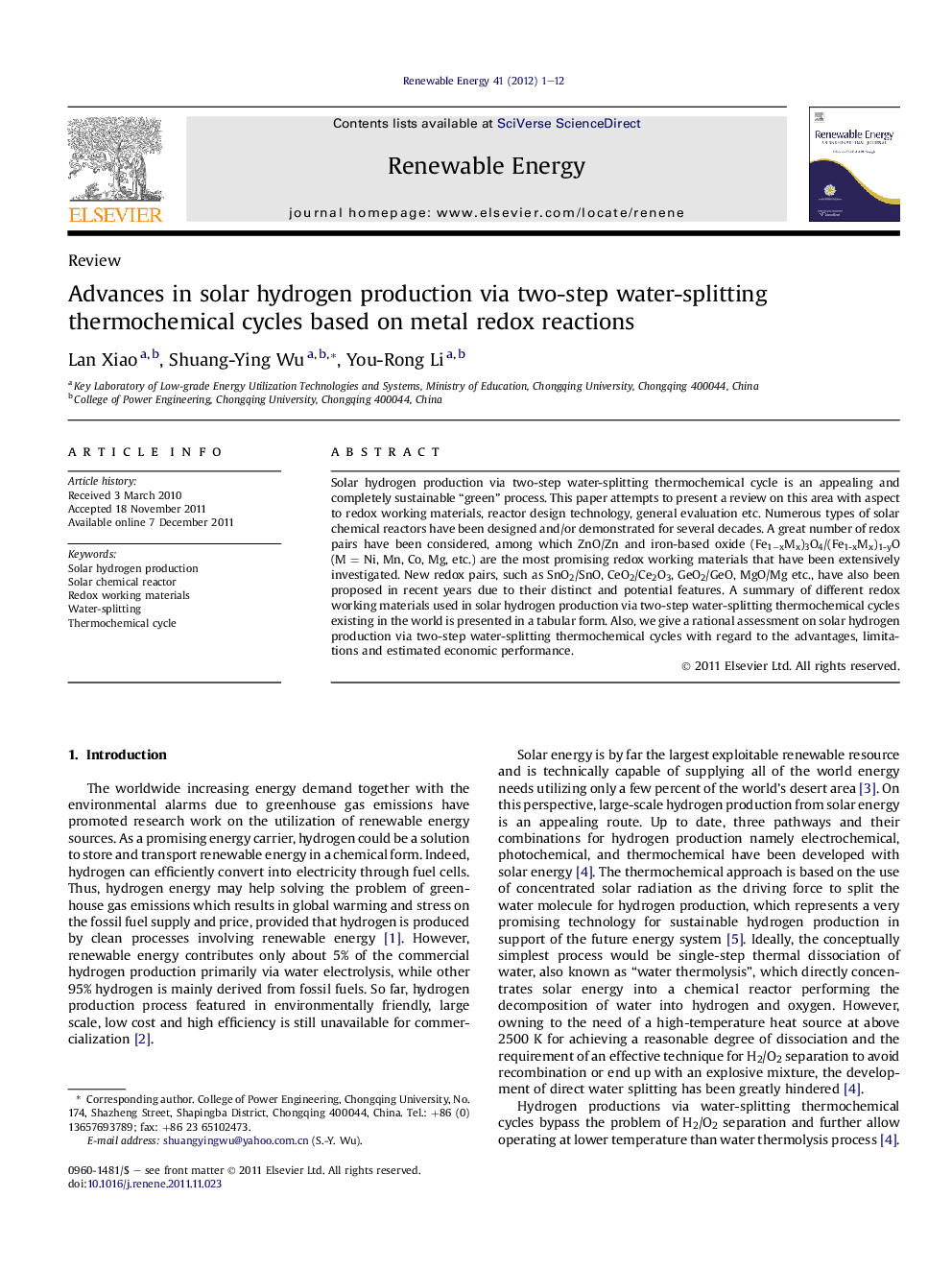| کد مقاله | کد نشریه | سال انتشار | مقاله انگلیسی | نسخه تمام متن |
|---|---|---|---|---|
| 301091 | 512497 | 2012 | 12 صفحه PDF | دانلود رایگان |

Solar hydrogen production via two-step water-splitting thermochemical cycle is an appealing and completely sustainable “green” process. This paper attempts to present a review on this area with aspect to redox working materials, reactor design technology, general evaluation etc. Numerous types of solar chemical reactors have been designed and/or demonstrated for several decades. A great number of redox pairs have been considered, among which ZnO/Zn and iron-based oxide (Fe1−xMx)3O4/(Fe1-xMx)1-yO (M = Ni, Mn, Co, Mg, etc.) are the most promising redox working materials that have been extensively investigated. New redox pairs, such as SnO2/SnO, CeO2/Ce2O3, GeO2/GeO, MgO/Mg etc., have also been proposed in recent years due to their distinct and potential features. A summary of different redox working materials used in solar hydrogen production via two-step water-splitting thermochemical cycles existing in the world is presented in a tabular form. Also, we give a rational assessment on solar hydrogen production via two-step water-splitting thermochemical cycles with regard to the advantages, limitations and estimated economic performance.
Journal: Renewable Energy - Volume 41, May 2012, Pages 1–12